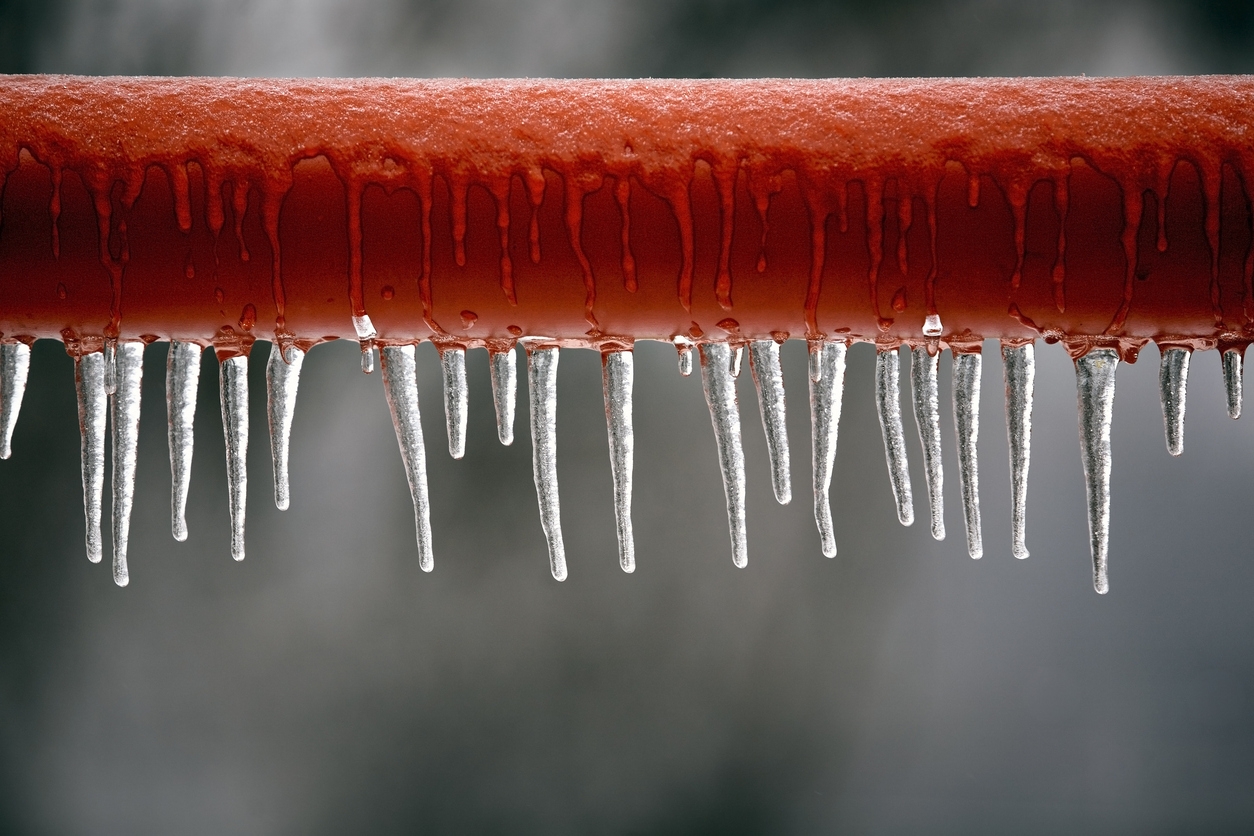You turn on the bathroom faucet first thing on a cold morning, and only a trickle of water comes out, indicating that your water line or frozen hot water pipes might be the issue. If you act quickly, you can still prevent the problem from worsening. I'd like you to continue reading this article to learn more about how to determine if your pipes are frozen and take the necessary steps to fix them before calling a professional plumber.
Understanding Frozen Pipes
What Causes Pipes to Freeze?
Pipes can freeze when the water inside turns into ice when the pipe temperature drops below 32°F (0°C). Several factors can contribute to this chilly predicament:
-
Low Temperatures: When the mercury dips below freezing, the water in your pipes can solidify.
-
Poor Insulation: Improperly insulated pipes are more vulnerable to the cold, making them prime candidates for freezing.
-
Lack of Use: If water isn’t flowing through the pipes regularly, it can stagnate and freeze more quickly.
-
Cracks and Gaps: Any cracks or gaps in your pipes or walls can allow cold air to enter, potentially leading to frozen pipes.
Understanding these causes can help you take preventive measures to protect your plumbing from the winter chill.
Please determine if there is water leaking from a burst pipe.
Could you take a moment to listen to the sound of running water? Water freezing in pipes expands, causing the pipe to burst between the freezing point and a faucet. Knowing where the water supply enters your home will help you focus your search. Starting at the location farthest from the water entry point, please inspect the faucets in your home and around the exterior to check for any running water.
Cold water supply lines are also susceptible to freezing, especially if they are not insulated or water is not flowing through them regularly.
If You Have Found a Busted Pipe, Find the Closest Shut-Off Valve
If you discover a burst pipe, acting quickly is crucial to minimize damage. Here’s how to find and use the closest shut-off valve:
-
Locate the Shut-Off Valve: This valve is typically found near the water meter or where the main water line enters your home.
-
Turn Off the Valve: Rotate the valve clockwise to stop the water supply to the affected pipe.
-
Open the Faucet: Open the faucet connected to the burst pipe to drain any remaining water.
-
Call a Plumber: If you’re uncomfortable fixing the pipe, it’s best to call a professional plumber to handle the repair.
By following these steps, you can prevent further water damage and effectively control the situation.
Preventing Frozen Pipes
Insulate Vulnerable Pipes
Insulating your pipes properly is one of the best ways to prevent them from freezing. Here are some effective methods:
-
Use Foam Pipe Insulation. It is an affordable and efficient way to warm your pipes. Most hardware stores sell foam pipe insulation.
-
Wrap Pipes with Heat Tape: Heat tape generates heat when plugged in and can be wrapped around pipes to prevent freezing. Just follow the manufacturer’s instructions.
-
Thermostatically Controlled Heat Cables: These cables activate automatically when the temperature drops below a preset level, providing consistent warmth to your pipes.
-
Seal Gaps and Cracks: Ensure that any gaps or cracks in your walls or floors are sealed to prevent cold air from seeping in and freezing your pipes.
By taking these preventive measures, you can significantly reduce the risk of your pipes freezing and bursting during winter. Please ensure you are always prepared and know what to do if you encounter a frozen or burst pipe.
If you have found a busted pipe, find the closet shut-off valve
If you discover a pipe burst, acting quickly to minimize damage is crucial. Could you trace the leaking pipe as far as possible and look for a shut-off valve? Valves are typically located at junctions of the main water supply. If you can’t find a shut-off valve, turn the water off at the main with a shut-off tool or water key.
You may be able to thaw the pipe yourself using space heaters
If you cannot find an active leak, inspect your pipes to determine where the blockage occurred. Open the faucets in your house to decide which ones are working. If you can access the pipe where the ice has formed, carefully inspect it for tiny cracks that the ice may be blocking.
Once you have determined the location of the blockage, turn off the water supply that feeds the affected pipe. Open the faucet at the end of the pipe that is blocked. You can wait for the pipe to warm up or try heating it with a hair dryer or heating pad for a faster solution. You can also use a space heater to warm the area around the frozen pipe, but monitor it carefully to avoid fire risks. Do not use a heat gun or blowtorch, as this could cause damage to the pipe and your house. When the water in the pipe has thawed, slowly turn the water back on and check for leaks.
Work with Professionals to Reclaim Your Frozen Pipes
Frozen pipes pose a danger to your possessions and your home. When they thaw, they can burst and cause water damage, so taking proactive measures and seeking professional help is essential. If your pipes freeze, you may incur costly repairs for both your plumbing and flooring. You can prevent plumbing issues or repair your frozen pipes with the professionals at Heaney Plumbing. Our licensed and certified technicians can help restore your plumbing to an efficient and safe working order. Could you please call our team today?

